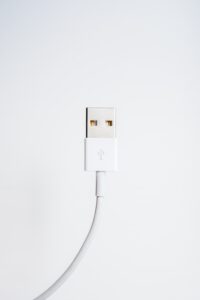
Digital Vision Boards
Create your digital vision board! This way, you’ll gain more insight into your goals and keep them clearly in view—guiding you toward your ideal future!
Freelancers in particular often find themselves in a dilemma: no one is watching their backs, so they can work freely and creatively – and procrastinate to their heart’s content. The catch: output and thus hourly wages are steadily decreasing while we mindlessly scroll through social media instead of working productively.
Freelancers in particular often find themselves in a dilemma: no one is watching their backs, so they can work freely and creatively – and procrastinate to their heart’s content. The catch: output and thus hourly wages are steadily decreasing while we mindlessly scroll through social media instead of working productively.
The principle of Deep Work can help us to dive from the surface back into deep concentration: With simple tricks we can trick ourselves and finally really get going – Deep Work that is. Deep Work creates focus in a distracted world.
With 6 simple tricks you can start Deep Work today.

For me, the biggest sources of disruption are my email inbox, smartphone and social media: For many years, I replied directly as soon as an email came in – and bang, I was no longer in the flow. It’s even worse with phone calls: If someone calls, you inevitably have to interrupt your work. Especially when I’m concentrating on a text, it’s counterproductive.
And if no one calls or emails? Then there’s social media. Let’s see what’s going on there… At some point I noticed that I automatically clicked on the little Instagram icon in my bookmarks bar after an intense period of work, as if I wanted to reward myself with the click for the work I had done.
Sources of distraction are many. The first step to Deep Work is to recognise your personal concentration traps. When you become aware of a source of distraction: Write it down. This way you can find a solution to dry up the source of distraction.
It may sound paradoxical: If we are not always available, we are better contractors. After all, if you disconnect from time to time, you won’t be pulled out of your focused work all the time. That’s why I switch off my mail client when I want to concentrate.
Then I’m not available for two to three hours – but I don’t have to be all the time. My work is easier to do, I finish faster – and I need much less time to check the finished work before sending it out. Deep Work helps me to deliver optimal results.
I usually tell my clients right when I meet them that the best way to reach me is by email. Because during productive work phases, I switch my phone to silent and put it away. During breaks or after a productive phase, I call back directly if I do have a missed call. So far, no one has complained about this.
When I forgot my smartphone once and was on a trip for two days without a phone, I realised: you miss very little: I had neither angry voicemail messages, nor pestering mails or messanger messages that couldn’t have waited.
That’s why the phone is silent with me when I really want to concentrate.
During our studies or training, we polished our flat spotless, punched holes in files or excessively painted our fingernails to perfection when we actually wanted to study. Today, we secretly dive into the temptations in our browser – and no one notices that we are doing something else. News sites, messaging services, social media and blogs are a welcome distraction. After all, we are sitting at the laptop. And the smartphone with all its temptations is always within reach.
Psychologists call it procrastination when we keep putting off urgent things. If you can’t save yourself from the swamp of distraction through strict self-discipline, technology can help: plug-ins and apps block the tempting websites for us during our deep work phases.
Because work apparently exhausts my self-discipline, I bought Cold Turkey Blocker. I have told this programme that I intend to do concentrated work between 9am and 5pm on Mondays to Fridays. I also told Cold Turkey Blocker about my digital Achilles heels. Now the programme knows all the sites, platforms and apps I used to procrastinate with. Like a muscle-bound bouncer, Cold Turkey Blocker now stands in front of websites and won’t let me back in until after 5pm.
Also, most smartphones have a built-in blocker – you just have to use that feature.
So if you know for a fact that these programmes are distracting you, turn off the notifications that take you out of focus – or lock yourself out of apps and platforms altogether.
It helps me a lot to meet up with friends and colleagues to work – and not just to exchange ideas. Because when we sit next to each other at our laptops, the temptation to get up and damp mop the kitchen or watch an episode of your favourite TV show on the side tends to be almost nil (dear ex-students, hand on heart, you know what I’m talking about). So co-working can be very helpful. The only catch is that if you talk to your co-workers all the time, nothing is gained. But you’ll quickly find a way – after all, you want to get more done together.
Many freelancers work from home without any problems. They open their laptop in the living room – and off they go. For many people, this kind of remote work or telecommuting works wonderfully – but for me, unfortunately, only to a limited extent: After my start-up, I worked within my own four walls for exactly one year. But at some point I got wise to myself: I had crowned myself the queen of procrastination and hadn’t even noticed. The solution: I looked for an office. By chance I found a very cheap studio where I now write, draw and paint.
Since then, I work much more productively, I don’t get distracted any more and work and free time only merge when I really want to. I used to sit in my office after work. Now I cycle home in the evening after work and really have the feeling of being free.

Create your digital vision board! This way, you’ll gain more insight into your goals and keep them clearly in view—guiding you toward your ideal future!

Calendar Blocking The end of planning chaos Calendar Blocking The easy way out of the chaos of solo self-employment Yes, you love your job and self-employment – but everything in life has at least two sides. While many companies have a separate office for this, some freelancers underestimate it: project management. But as lone warriors, we can make it very easy for ourselves – with Calendar Blocking. Calendar blocking is probably the easiest way to keep track of your assignments, appointments and to-dos. To do this, you write down everything that needs to happen this week and everything you are looking forward to in your calendar. What you need: A calendar and a relatively realistic estimate of how long you need for your tasks. 1. Let’s get digital Of course, you can also do calendar blocking with an analogue paper calendar. With a digital calendar, however, it is easier: you can easily move appointments or enter them as a recurring series. You can also invite customers to your appointments and add attachments, links or locations to the calendar entry. Every smartphone has its own calendar app. Alternatively, you can use the Google calendar and subscribe to it on your computer and smartphone. 2. Organise calendar Name your calendars and divide your tasks and appointments according to a clear and simple pattern. For me, for example, “appointments” are everything that requires me to put on something other than sweatpants and leave the house. “Projects” and “to-dos” differ in that projects are tasks that I undertake for clients. To-dos, on the other hand, are all the tasks I do for my business, such as writing invoices, bookkeeping or acquisition. 3. The 5 keys to Calendar Blocking 1. forecast Think about how long you really need for a task. Most of the time it takes us longer than we thought it would. If you use a time tracking tool, it can help you with a realistic estimate by looking at completed projects. 2. Priorities Before you start planning, think about what has priority: Do you have a marathon coming up that you want to be fit for? Then plan your training first. Or is the deadline for an important project fast approaching? Then this is your priority. Think briefly about what your focus is this week and this month. 3. Planning Plan your week and your month. Write each task and block of tasks in your calendar: half an hour in the morning to write or answer emails or an hour on the last day of the month to write invoices. All tasks that are scheduled regularly can be scheduled as serial appointments. 4. Break Plan lunch breaks. Only those who take a break can do a good job in the long run. Make a weekly appointment for this right away. Of course, you can flexibly postpone your break if you get hungry earlier or an appointment changes your daily structure. 5. Buffer Hardly anything is as important as buffers. They give you the freedom to respond flexibly to your clients’ wishes. They also help you not to panic if a task has taken a little longer or an unexpected call has lured you out of concentration. 4. fill in tasks With the help of the 5 keys, you can now distribute your tasks over your week. Write down the time blocks so that you have enough time for each task. After all, calendar blocking is supposed to support you – not stress you out. If you like, you can enter reminders in the individual appointments to remind you 30 or 15 minutes before the start of the next task to complete your current task. And that’s what you get out of it Organization Keep track of your to-dos. Instead of having to-do notes and reminder apps, you can simply enter everything in the calendar. This way, even if you want to make an appointment with your dentist, you can see where you really still have a gap in your day. Project management Du lernst, große Projekte in kleine Teilaufgaben aufzuteilen. Jeder einzelne Task bekommt einen Termin: Du musst ein Angebot für Kunde XY schreiben? Trag dir einen Termin von 15 Minuten ein. Oder musst du einen Blog-Post verfassen? Räum dir eine Stunde in deinem Kalender dafür frei. order book While you can flood a to-do list with ideas and tasks, your calendar will quickly show you where your limits are. You can see at a glance when you have time to take on a new project. This will prevent you from overdoing it and eating up your free time with your job. Self management By entering private appointments and sports, you make it clear to yourself that you can also have free time as a freelancer. collaboration You can block appointments with customers and invite them directly. You can also use the note function in the appointment to share important information with them. Read more… Bildquellen Fotografin: Isaac Benhesed on Unsplash Gefunden auf Unsplash.com

Freelancers in particular often find themselves in a dilemma: no one is watching their backs, so they can work freely and creatively – and procrastinate to their heart’s content. The catch: output and thus hourly wages are steadily decreasing while we mindlessly scroll through social media instead of working productively.

Scientists simply study everything – including what music helps us work and what does not. Here is a small overview and my personal tips.
Hat dich das Thema Deep Work gepackt?
Wenn dich das Thema gepackt hat, schreib mir gerne eine Mail. Gerne nehme ich dich noch weiter mit in das Thema.
